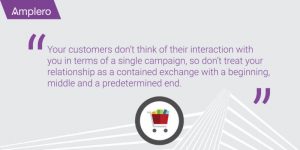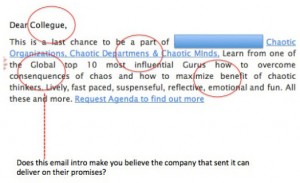— June 2, 2019
What is Link Building?
Link building refers to the process of actively increasing the number of links to your website, generally because you’re trying to improve your search engine ranking, or spread the word about your business. It uses assets you create and host on your website to acquire the links – whether that’s an ebook, white paper, case study, infographic, or another helpful resource. You also need to be aware that quality and authoritative links help, but your rankings could suffer from Toxic or malicious links.

Link building takes time and effort, and Google wants to see those links come in naturally over time. Black hat SEOs often turn to buy links, which is a huge no-no to try to cut out the hard work involved in proper link building. While it may help increase ranking temporarily, it always comes back to bite you in the end. But, do it right, and your efforts will pay off tremendously.
Designing Your Link Building Campaign
As tempting as it may be to go out and start asking people to link to your content that’s not an effective way to accomplish it, and will more often than not be a gigantic waste of your time. Approaching it systematically with a clear plan in place will take longer, of course, but it will yield a much higher ROI.
Set Your Goals
Knowing the goals, you’re trying to accomplish with the link building campaign will help you devise the best possible strategy to help you reach those goals. Whatever your goal with the campaign is, it should tie into your overall business goals. If your goal is to build ten links – that’s not a good goal to hit if building those ten links won’t affect the overall success of your business.
Sure, you have a goal to build quality links, the more authoritative links, the better, because those play such a significant role in search engine rankings. But, because link building won’t make you overnight success and impacts aren’t instant, you need more reasonable goals than “Build 100 links.”
Developing Your Assets
Your assets are what you will use to attract and earn the links. What works for you will vary from business to business and from industry to industry. An excellent way to think about it is what you can use to hook people? What will make them care about you and what you have to offer? The most common asset is content, but others include data, products, services, and people. Regardless of which assets you want to use, they need to be created to serve the audience you’re trying to attract.
Think about what kinds of links you need to get. Options include:
- Homepage links
- Links to deep pages within your site
- Links that contain your brand or company name
- Links that contain keywords you’re targeting
To figure out which ones you need, begin with a detailed link analysis on your current website. Also, take a look at how you’re ranking for specific keywords compared to your competition. Use Open Site Explorer for this analysis, so you know what your link profile looks like at the start. It can help you identify opportunities for improvement, which may help guide you in asset creation or help you see current assets you can use to attract links.
Finding Link Targets
Think about the type of people you should contact, because you don’t want to waste energy on those who wouldn’t be interested in your content. Randomly reaching people will lead to a lower response rate and a hit on your reputation.
Before you start your link building campaign, at least have a rough idea of who you think will care about what you’re doing. Who will care enough to link to it? That’s what matters.
Let’s say you’re putting together a piece of content called, “The Stress-Free Guide to Holiday Meals with Family and Friends” because you know how much people enjoy eating the holiday meals, but stress out about making them or hosting the gatherings.
Who would be interested in this guide?
- Food bloggers: They make a habit of sharing recipes with their audience all the time!
- Parent bloggers: They know how stressful it can be managing a household with littles running around, and are usually willing to receive stress-reduction and time-saving tips.
- Recipe sites: They’re willing to share anything that contains fantastic recipes!
Now that we know who we’re after, it’s time to dig a bit deeper to find them.
Locate Blogger Lists with Google
Search “list of food bloggers,” “list of parent bloggers,” and “list of recipe sites,” and you’ll find no shortage of lists to work through, where someone has already done the hard work of putting together the list.
Use a tool like a Scraper to grab all the URLs from the page. Put them in a spreadsheet for later, and then use URL opener to open all of them with a single click. This way, you can look at them to make sure they are relevant to your content and locate contact information.
Harness the Power of Twitter
You can search Twitter for lists of bloggers and influencers, but you can also use a third party tool, Followerwonk, to search bios. Search again for food blogger, parent blogger, or recipe site, to find Twitter users to connect to. Download your results to a spreadsheet, and you’ll be able to find the websites associated with those people to include in your list.
Researching Link Targets
At this point, you want to do a bit more research on the people you’re targeting. Look at their social media profiles to see what they’re sharing, to make sure they’re still active, and whether they only promote their content or include others, too.
As you go through their websites, take notes of what they’ve shared and what interests them, so you can use it to craft a personalized pitch to them when you contact them later. Using a generic approach shows the person you don’t care about what they have to offer you – and you haven’t’ done your homework. It’s the quickest way to get ignored.
Next, look for contact details for the websites you find relevant. Check the header and footer for a link to a contact page, or an about page that often lists contact details. You can use the ToutApp Chrome plugin to highlight email addresses on the page for you.
Prioritizing Link Targets
Once you have your list of link targets, it’s time to group them by priority so that you can customize your messages accordingly. You can prioritize them any number of ways. However, you feel it is most appropriate for you.
- By blogger influence, for example, the number of social media followers on Twitter, Instagram, or Facebook
- By likelihood of linking, for example, food bloggers compared to parent bloggers
- By domain metrics, for example, domain authority
Outreach
Now it’s time to start talking to people about your campaign. Begin with your high-level targets because they can get you good results if they respond. And, you can use them later for social proof when you reach out to the smaller websites. If smaller sites seen other influencers have picked up on your content, they will be more open to sharing your content when you contact them.
Remember, you’re contacting a real person, so craft your pitches with the information you noted in your research. Call out particular content you like that they created and shared. Focus on real conversation and prove to them the value your content will offer them. They don’t owe you anything, and you’re asking them for a favor. Keep the message short and sweet, but detailed enough to show them why they need to care, and what action you want them to take. Offer to write the content for them, because they may like your content but not have enough time to write about it. However, save that last bit for the most significant influencers because it will require additional time and resources on your part – so it’s not something you want to offer everyone.
Personalize the message with their name, a good subject line, something specific about their work, and a proper email signature. If you come off as a spammer, this and any future attempts to connect will be ignored.
Follow Up
If you don’t hear from someone after that first email, it’s okay. People get busy, and the more popular bloggers and influencers will get lots of emails like this every day. It’s okay to follow up once if you don’t get a reply the first time. This reinforces the fact that you’re a real person and not a spammer using automated software to make contact.
Keep your outreach organized so you can tell who you need to follow up with and when. You can track replies in a CRM or a standard spreadsheet.
If you get negative responses, it can be discouraging, but you should always take the time to reply instead of ignoring it. This builds a relationship because you never know when you could have a better opportunity to work with this person again in the future. Get as much feedback and information as possible so you can use to improve future campaigns.
Tips for Link Building Campaigns
Guest Blog for Other Websites in Your Niche
The author byline is a great way to get links and build your brand back to your site and encourages people who like your work to go back there to learn more about you. You want to guest post on high quality, high profile websites, though, because those are the ones that are going to do the most work for you. If you’re blogging on sites with no authority or traffic, then it’s not going to do you any good.
Find sites in your niche that allow for guest posting, by going to Google and searching “write for us” or “contribute” with your niche keywords. Sites like SEMRush, Search Engine Journal, and Entrepreneur are great for those in the SEO, Online Marketing, or Business niches. Every niche has high powered and respected publications, but you can also find Medium publications that accept contributions if you’re looking for something a little different.
Make Use of Broken Links When Link Building
Prospecting for broken links is an excellent way to connect with people. If you find a broken link on someone’s website that your content could be a viable replacement for, then you have a way to provide mutual benefit.
Use a tool like Check My Links to find broken links and email the site owners to let them know you found a broken link on their site. They’ll likely be thankful you spotted something for them, and you can casually mention you have a link they could replace it with.
Take your time with link building and remember you need different domains in your link profile, too. If your main competition has 1,000 referring domains, you need at least 1,001 to be able to have a shot at competing. You never know what kind of ongoing link building efforts they have, so you should never really stop trying to build links.
Digital & Social Articles on Business 2 Community
(61)








